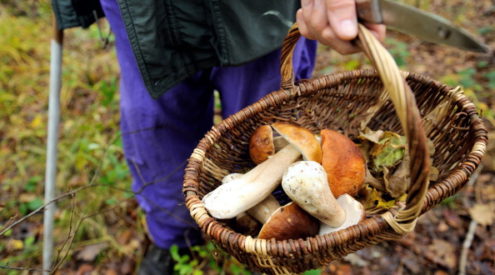Who knew pies could be as polarising as politics? Surely it’s just something to scoff on a road trip? But when it comes to picking a pie in the Overberg, tempers flare, insults fly and friendships are put on hold. Lucy Corne settles the debate.
Words & Photography: Lucy Corne

The Brits have the Cornish pasty as their measure of pie perfection, we in South Africa have the pepper steak.
Two farm stalls, both alike in – well, most ways really – but whose fans are more at odds than the Capulets and Montagues. Our scene is a 13-kilometre stretch of the N2 in the Elgin Valley, an hour’s drive from Cape Town. It’s here that a culinary debate has raged for years: who makes the best pies? I drove out to settle the argument once and for all. A highly technical criteria was set: pies would be rated on whether you have to spend 20 minutes picking pastry crumbs off your shirt (good) or 20 minutes picking stringy meat from your teeth (bad).
Peregrine
Established as a fruit stall in 1964, Peregrine has become a destination in its own right. Now, instead of just dropping in for a pee en route to Knysna, Cape-tonians actually come to sip cider and shop. But in some ways, Peregrine is a victim of its own success. When the place went through a swanky refurb in 2014, some felt it lost its soul. ‘It went mainstream and the pies suffered for it,’ they tell you. But can a pie really go corporate or is it just nostalgia talking?
The pie: Pepper steak
The pastry: Buttery, crunchy and showering your jersey with warm, flaky crumbs, Peregrine’s pastry is just about perfect.
The filling: Rich and tasty and no scrimping on the pepper. The meat is tender, though if I’m nit-picking it could use a touch more gravy. The verdict: A near-perfect example of a pie, served fresh and hot. I was sad I had to share it with my husband.

Where pie legends are made.
Houw Hoek
Houw Hoek is a friendly, unflashy farm stall at the start of its namesake pass. The pass was built in the 1830s and a farm stall followed shortly afterwards.
Both have undergone upgrades over the decades and today there’s a cute country restaurant, a dam where you can fish for trout and a great selection of pickles, jams and cookies in every shape and flavour. Of course, they also have pie – 10 flavours to be precise – but, to be fair, we stuck with the South African classic.
The pie: Pepper steak
The pastry: Houw Hoek’s pies aren’t kept in a warmer so staff heat them to order. The result was a tasty but soggy casing that made me weep for what could have been.
The filling: Definitely a juicier filling, with no need for a post-lunch floss, but the baker was more conservative with the pepper, leaving me yearning for spice.
The verdict: The essence of a truly great pie is its casing and pastry never does well when reheated. I ended up eating the filling with a fork, discarding what should be the best bit of the pie.
Much like the independent candidate in a US election, there is a third option when it comes to grabbing a pie on the Overberg N2. Most people have already filled their tummies and emptied their bladders by the time they reach Dassiesfontein, and I found out too late about the third contender in the Overberg pie wars. By the time we arrived, only a sad pair of pies remained. It seemed unfair to compare an end-of-day steak and kidney to a lunchtime pepper steak, so for now, Dassiesfontein remains on my pie hit list.
When it comes to the Big Two, there’s no question in my mind who deserves the pie maker’s crown. With flavourful filling and a crunchy crust that currently has me salivating on my laptop, Peregrine grabs the gold. But don’t just take my word for it – get out there and join in the debate.
Pie Town
If there’s one town people associate with pie, it’s Riviersondered. Ou Meul Bakery’s pies are so popular that branches have opened around the Western Cape. But there’s a little pievalry going on here, too. About 400 metres down the road, a sign reads ‘The Original Pies Shop’. In fact, this is where Ou Meul began, moving to its current location with new owners in 1994. Today most people drive right by the original spot.

Pie: A Humble History
Like most great inventions, we have the ancient Egyptians to thank for this gastronomic masterpiece. The earliest recordings of pie-making go back to around 6000 BC. The Egyptian version involved a honey filling wrapped in a pastry made from wheat, oats, rye or barley.
By the 5th century BC, ancient Greeks recognised pastry making as a career. Meanwhile, the Romans used pastry only as a type of container, used to preserve the flavour and moisture of the filling. This prevailed well into the 1300s in Britain, where the lid of pastry served only as a way to preserve food.
The humble pie may have its roots in Egypt but Britain ‘perfected’ the pie, something the nation is fiercely protective of.
Let Them Eat Pie
In 2015, a petition was put before the UK parliament to clarify what constitutes a proper pie. The petition urged ‘the implementation of criminal sanctions upon the owners of food outlets that serve items described as pies without a pastry base. Exemptions will apply for shepherd’s, cottage and fish pies.’ It received 5 687 signatures.

Pie Chart
71% of Brits believe a pie should have pastry on all sides. 29% of Brits are okay with calling a pastry lid on a dish, a pie.






















